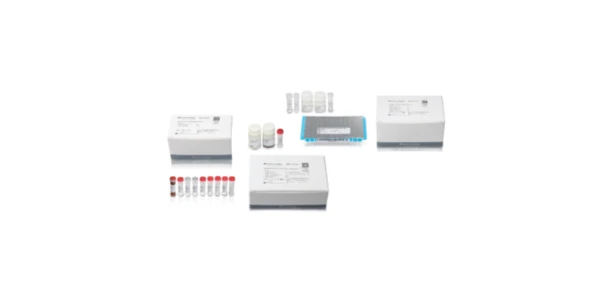The Virus Surface to a Novel COVID-19 Vaccine Candidate: The Journey of the SARS-CoV-2 Spike Protein
The journey of SARS-CoV-2 spike protein from sequence to vaccine candidate is remarkable on many levels.
The recent novel coronavirus SARS-CoV-2 outbreak has reminded us that the human population is extremely susceptible to the emergence of unknown infectious diseases. The rapidity with which we have confronted the challenge of COVID-19 from a scientific standpoint is a testament of how far we have come as a technology civilization.
The Rapid Emergence of Detection and Treatment Strategies
As of this date of publication, there are over 30 FDA approved diagnostic testing kits and numerous other medical devices and PPE products launched in response to the Emergency Use Authorization (EUA) program administered by the FDA.
The FDA has issued EUAs to allow hydroxychloroquine sulfate and chloroquine phosphate products to be administered to patients under certain circumstances. Numerous other therapeutics are in development or progressing through clinical trials.
Vaccine development is progressing at a whirlwind pace, with five candidates in clinical trials and many more in various stages of development. One such vaccine candidate, a novel mRNA vaccine encoding full-length, prefusion stabilized spike protein from SARS-CoV-2, represents a first of its kind – and if successful, may usher in a new age of mRNA-based vaccine technologies for an array of diseases beyond the current pandemic.
Research into the novel coronavirus, from protein structure to cell entry and infectivity, has accelerated with break-neck speed, leveraging collaborations across multiple disciplines, technologies, and geographies. A race to understand the science behind the COVID-19 disease has captured the world’s research minds and the general population’s intense interest.
The Story of One Important Protein’s Role in Vaccine Research and Development
In retrospect and in response to the previous outbreak of the related SARS-CoV virus in 2002, researchers, physicians, epidemiologists, and others in the scientific realm joined forces to uncover many of the details of virus biology. Among the feats accomplished was the visualization of key proteins encoded by the virus, including those believed to play central roles in infectivity.
The SARS-CoV Spike Protein Target
In this prior work, a major protein on the virus surface, the SARS-CoV spike protein giving the virus its fitting spiky appearance, was found to be a key mediator of virus entry into human cells. Intense scrutiny of the CoV spike protein structure and function unveiled its potential as a target for vaccine development and therapeutics. Although no definitive vaccine emerged from this previous SARS work (the virus was suppressed before more substantial resources were needed), the stage was set to gather together the necessary tools, in the form of instruments, methods, intellect, and knowhow, and wage a new battle against the rapidly emerging COVID-19 disease.
Knowing Where to Look
Several groups had studied the family of coronaviruses in the past and had solved structures of spike proteins overall similar to the SARS-CoV-2 spike protein. The previous SARS-CoV and MERS-CoV spike proteins from closely related betacoronaviruses displayed a trimeric protein complex each with distinct receptor binding domains. Upon receptor binding, the protein subunits undergo a hinge movement, essential to helping the virus membrane to fuse with the host cell membrane during virus entry. This previous work led researchers to identify key interactions in the protein that allow it to undergo pre-fusion to post-fusion movements. Methods developed to “lock” the protein in the pre-fusion conformation were critical in the elucidation of protein structures using cryo-electron microscopy (cryo-EM) and x-ray diffraction techniques.
The Reveal
Upon sequencing of the novel SARS-CoV-2 virus in early February, the techniques and cryo-EM imaging technology used in previous work were modified and rapidly instated in determining the structure of this new spike protein. Advanced cryo-EM technology this time around enabled unprecedented resolution and imaging of the protein complex in just 12 days -- an incredible feat considering the high-glycosylated (sugar-coated) and complex trimeric arrangement of the protein.
The novel SAR-CoV-2 spike protein demonstrates striking similarities with the previous SARS protein including near identical structural arrangement. Minute differences at the receptor binding domain (RBD) indicated to investigators that the mechanism of host cell binding and transition may be unique, and may even underlie the enhanced infectivity observed in COVID-19. Biophysical experiments confirmed a >10-fold increase in binding strength compared with the previous protein, overall consistent with the researcher’s theory.
At approximately the same time, researchers in two different collaborative efforts solved crystal structures of SARS-CoV-2 spike protein and protein complexes using x-ray diffraction techniques. Again, employing methods and tools used in previous work and armed with knowledge of earlier structural clues, these groups produced results with unprecedented speed.
First, crystal structures of the RBD in complex with the host receptor, ACE2, indicated a novel structural ridge feature and several amino acids in a binding hot spot, unique in SARS-CoV-2 spike protein. Such minute differences at the protein interface may offer clues the heightened binding affinity. Next, structures of the RBD in complex with a neutralizing antibody (taken from a convalescent SARS patient) identified an epitope far from the binding site that is shared between SARS-CoV and SARS-CoV-2 spike proteins.
Elements unique to the novel SARS-CoV-2 spike protein may ultimately prove essential in developing a distinct antibody response in the host and a vaccine specific for COVID-19 infection. Similarities between this protein and the previous SARS-CoV spike protein may likewise be exploited in generating a broader spectrum immune response against multiple pathogenic coronaviruses – for the current COVID-19 pandemic and for possible future outbreaks.
The Race for a Vaccine
The skill of the investigators and the breadth of technologies used were key factors in the structural work. Critical to the advancement of these results to the next level, were the academic, government, and industry collaborations involved.
Approaches towards vaccine development can be challenged by the nature of the infectious agent, the timescale for development, and the significant resources required. The MERS outbreak and the subsequent SARS pandemic in 2002 in many ways exemplified these challenges. Lacking the development of specific antivirals or approved vaccines, the outbreaks were eventually stopped by conventional control measures, including travel restrictions and patient isolation. Emerging in their wake was the acknowledgement that rapid spread and infectivity rates of coronaviruses and emerging infectious diseases in general is a grave concern requiring innovative strategies towards testing and therapeutic development.
Such innovations have given rise to novel modes of vaccination, including the concept of messenger RNA (mRNA) template delivery. The approach involves the successful delivery of mRNA, or the transcript for production of the protein, into host cells. Upon expression of the encoded protein on the surface of immune cells, the body then theoretically launches an immune response to the protein, producing antibodies specific to the vaccine protein and effectively combating viral infection.
Although a mRNA vaccine had never before been approved, experimental vaccines have been engineered and clinically tested to varying degrees. Moderno, a pioneer of the mRNA vaccine technology, has created candidates for a number of influenza and coronaviruses in the recent past, including an experimental vaccine for MERS-CoV. This expertise allowed the company to pivot immediately upon release of the sequence and quickly advance a program towards COVID-19.
Instrumental to this work was structural and function insight as well as molecular virology research from academic groups, setting the stage for the vaccine construction. The unique structural details of the spike protein, for example the ability to “lock” it in the pre-fusion form, were essential for this development process. In partnership with the National Institute of Allergy and Infectious Diseases (NIAID), the vaccine has been created and implemented in Phase I clinical trials. Depending on the results the candidate may be eligible for emergency use authorization and fast-tracked approval by the FDA.
Perhaps overshadowed in the urgency to produce the vaccine candidate, is the collaboration between academic scientists, government institutions, and private industry in this work. A mere 42 days passed from virus genome sequencing to patient ready testing. The SARS-CoV-2 mRNA vaccine was the first candidate to enter clinical trials in patients, and many others based upon differing platforms have since joined the race. A safe and effective vaccine will hopefully emerge.
Outlook
The journey of SARS-CoV-2 spike protein from sequence to vaccine candidate is remarkable on many levels. The incredible speed and tenacity that scientists have delivered speaks to our ability to thrive in the face unprecedented challenges. The strong spirit of collaboration, the depth of intellectual prowess, and the sheer strengths of cutting-edge technology are perhaps representative of a new age of modern medicine – one that functions in hyperdrive.











